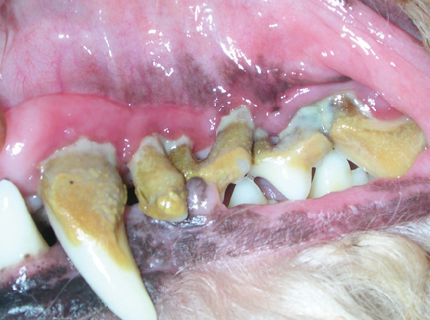Infections caused by resistant microorganisms often do not respond to conventional treatment, resulting in prolonged illness and increased risk of death. About 440,000 new cases of tuberculosis with multidrug resistance (MDR-TB) occur annually, causing at least 150,000 people. Resistance to antimalarial drugs the previous generation, such as chloroquine and sulfadoxine-pyrimethamine is widespread in most malaria endemic countries of. A high percentage of nosocomial infections caused by highly resistant bacteria such as methicillin-resistant staphylococcus gold (MRSA). Inappropriate and irrational use of antimicrobial agents creates favorable conditions for microorganisms appear, distribute and store. What is antimicrobial resistance? Antimicrobial resistance (AMR) resistance of microorganisms to antimicrobial medicine to which he was previously sensitive. Resistant organisms (these include bacteria, viruses and some parasites) are able to resist antimicrobial attack such as antibiotics, antiviral drugs, and antimalarials, so that standard treatments are ineffective and infection persists and can spread to others. AMR is a consequence of the use, including misuse, of antimicrobial drugs and develops when the organism becomes mutated and gene stability. Why resistance to antimicrobials is a global problem? Infections caused by resistant microorganisms often do not respond to standard treatment, resulting in prolonged illness and increased risk of death. AMR reduces the effectiveness of treatment because patients remain contagious for longer, potentially spread resistant bacteria to others. Many infectious disease risk to become uncontrollable and may undermine the progress made towards achieving the objectives of Public Health, the United Nations Millennium Development Goals by 2015. When infections become resistant to first-line drugs, more expensive therapies should be used. The longer duration of illness and treatment, often in hospitals, increasing health care costs and financial burden on families and society. Achievements of modern medicine are at risk AMR. Without effective drugs for the care and prevention, treatment success, such as organ transplants, chemotherapy, cancer and major surgery would be endangered. AMR threatens the health and loss of trade and economy
growth of global trade and travel allows bacteria to quickly spread to distant countries and continents. About 440,000 new cases of tuberculosis with multidrug resistance (MDR-TB) occur annually, causing at least 150,000 people. Extensively drug-resistant (XDR-TB) are reported in 64 countries to date. PDF, 730kb
resistance to antimalarial drugs the previous generation, such as chloroquine and sulfadoxine-pyrimethamine is widespread in most malaria endemic countries of. Tropical malaria parasites resistant to artemisinin appeared in Southeast Asia, infection show delayed clearance after initiation of treatment (indicating resistance). PDF, 530Kb
high percentage of nosocomial infections caused by highly resistant bacteria such as methicillin-resistant staphylococcus gold (MRSA) and vancomycin-resistant enterococci. PDF, 151kb
resistance emerging concern for the treatment of HIV infection, after the rapid expansion of access to antiretroviral drugs in recent years, national surveys are conducted to detect and monitor resistance. Ciprofloxacin is the only antibiotic recommended by WHO for the management of bloody diarrhea due to Shigella organisms, now that widespread resistance developed other previously effective antibiotics. But the rapidly increasing prevalence of resistance to ciprofloxacin reduces the options for safe and effective treatment of dysentery, especially for children. New antibiotics suitable for oral administration are essential. AMR has become a serious problem for the treatment of gonorrhea (caused by gonococci), including even the "last line" oral cephalosporins, and increasing prevalence worldwide. Honokokkovoy incurable infection can lead to increase in morbidity and mortality, thus reversing progress made in dealing with this sexually transmitted infections. New mechanisms of resistance, such as beta-lactamase NDM-1, were among several gram-negative bacteria. It can be a powerful antibiotic that is often a last resort against different strains of bacteria ineffective. What drives antimicrobial resistance? Inappropriate and irrational use of medicines creates favorable conditions for microorganisms appear and spread. For example, when patients are not taking full course of the proposed antimicrobial or of poor quality drugs are used, resistant bacteria can emerge and spread. lack of national commitment to a comprehensive and coordinated action, a bad liability and lack of community participation;

inappropriate and irrational use of medicines, including livestock:
depleted arsenal of diagnostic tools, medicines and vaccines, as well as insufficient research and development of new products. Fighting drug resistance: no action today, tomorrow there is no cure
appearance AMR is challenging due to many interrelated factors, alone, isolated actions have little impact. Global and national inter-agency response is urgently needed to combat the growing threat of AMR. political leadership, support for monitoring, technical assistance, knowledge and forming partnerships, including disease prevention and control programs;
basic drug quality, delivery and management;
lab quality control. WHO has chosen the fight against antimicrobial resistance to the theme of World Health purchase strattera Day 2011. On this day, WHO produces international calls for concerted action to stop the spread of antimicrobial resistance and recommends that the six-point package of measures for the government. WHO calls on all stakeholders, including policy and planning, public and patients, doctors prescribed, pharmacists and pharmacists and the pharmaceutical industry to act and take responsibility for combating antimicrobial resistance. .
No comments:
Post a Comment